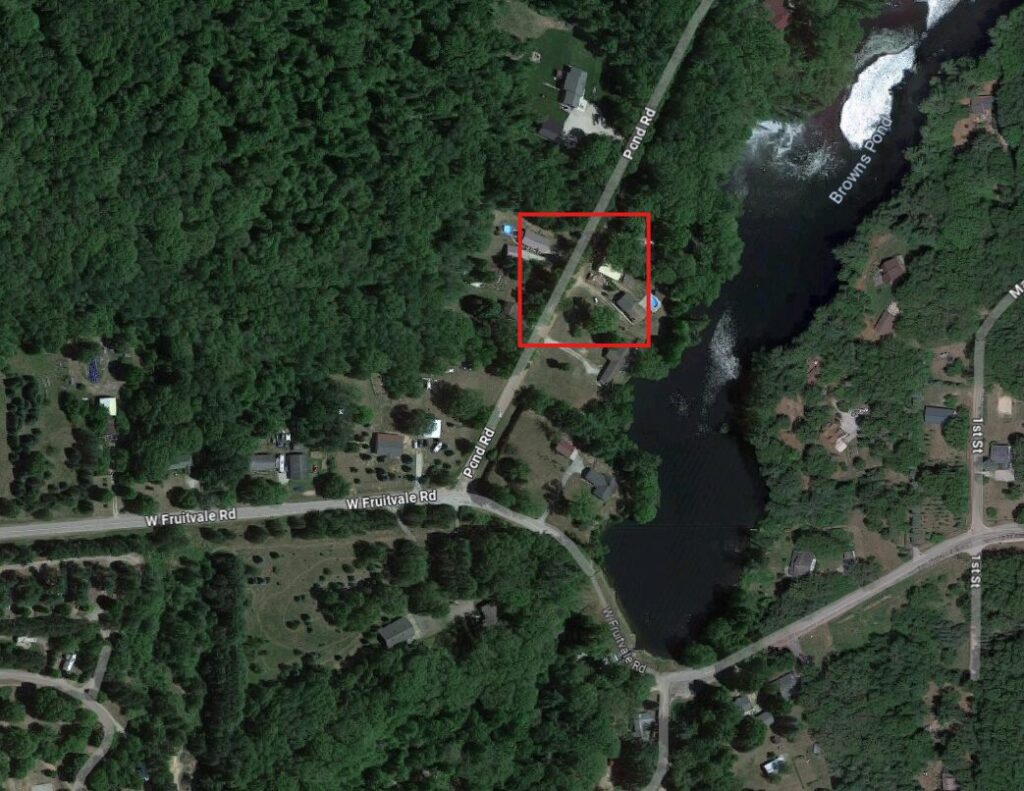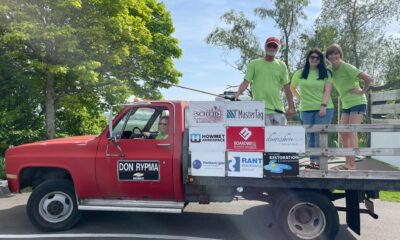
Nestled in the rich historical tapestry of Oceana Township, the Trading Post and Carleton Mill stand as vivid reminders of the region’s early pioneering spirit. Founded in 1857 by a group of settlers including I. E. Carleton, Oceana Township quickly became a hub of activity and development, encompassing the cities of Whitehall and Montague, and parts of Blue Lake and White River Townships.
The Trading Post: A Center of Commerce and Community
Established in 1837, the Trading Post was among the earliest structures in the area, serving as a crucial supply point for both Native Americans and early settlers. Situated on a bend in the river, the post was strategically located near the confluence of two branches of Carleton Creek. It provided essential goods and services, including lodging, food, and a store.

Charles Johnson, one of the prominent figures of the time, built a large cabin on the river’s edge, which became a focal point for trade and community gatherings. The Trading Post also featured the first school in the area, highlighting its role as a foundational institution in the burgeoning settlement.
The Carleton Mill: Powering Progress
The Carleton Mill, a water-powered sawmill, played a pivotal role in the development of Oceana Township. Constructed by I. E. Carleton and his associates, the mill was a marvel of engineering for its time, harnessing the energy of the White River to process timber. This mill not only fueled the local economy but also attracted settlers and businesses to the area.
Despite facing numerous challenges, including a devastating dam washout depicted in a painting by Bernice Sumner Norman, the mill remained operational until Carleton’s death in 1871. The mill’s significance extended beyond its economic contributions; it was a symbol of the settlers’ resilience and ingenuity.


Political Influence and Community Leadership
I. E. Carleton’s impact on the region was not limited to his entrepreneurial endeavors. He was a prominent political figure, serving in various state offices, including as a State Senator. His leadership and vision were instrumental in shaping the policies and direction of the young township.
Carleton’s involvement in local governance was evident during the annual meetings of Oceana Township, where he served as supervisor. These meetings often addressed pressing community issues, such as the welfare of citizens and the allocation of resources. Carleton’s dedication to public service and his ability to navigate the complexities of early township politics earned him a lasting legacy in the community.
Early Settlers and Their Legacy
The early settlers of Oceana Township, including influential figures like Dowling, Dalton, Mears, Slocum, and Ferry, were instrumental in establishing the region’s infrastructure and governance. Their contributions laid the groundwork for future growth and prosperity.
A notable image from 1888 captures Frank Donaldson and his oxen, Kit and Jumbo, hauling 4,400 feet of timber. This photograph, taken near Hesperia, exemplifies the hard work and determination of these pioneers. The use of oxen for transportation underscores the reliance on traditional methods in the face of challenging conditions.
Conclusion
The history of the Trading Post and Carleton Mill is a testament to the enduring spirit of the early settlers of Oceana Township. Their efforts to establish a thriving community amidst the wilderness are a source of inspiration and pride for current residents. As we reflect on the legacy of these pioneers, we are reminded of the importance of preserving and celebrating our local history.
For more detailed accounts and historical records, local archives and historical societies offer a wealth of information. Engaging with this history not only honors the memory of those who came before us but also enriches our understanding of the community we call home.
Interactive White Lake History
As we deliver articles weekly, I challenge you to be curious, explore the local area, and take pictures at these historic locations, and tag CatchMark Community.
Next week we will explore the history of Brown’s Pond. If you enjoy history and like our content please like and subscribe to our online resources. Also, check out the White Lake Area Historical Society website listed below.
http://www.whitelakeareahistoricalsociety.com/
https://www.facebook.com/CatchMarkCommunity
Brent is the Managing Partner of CatchMark Technologies and a seasoned technologist with over 25 years of experience in IT leadership, cybersecurity, and technical operations. He began his career serving in the U.S. Army, where he worked extensively with electronics—laying the foundation for his lifelong passion for technology and problem-solving. Brent holds a Certified Information Systems Security Professional (CISSP) certification and currently leads CatchMark’s Cybersecurity and Tech Support teams. Known for his strategic thinking and hands-on expertise, he excels in guiding secure, scalable solutions and driving innovation across complex technical environments.
Must See
-


Community
/ 1 day agoPetunia Patrol: Keeping White Lake Beautiful
Each summer, the streets of Montague and Whitehall burst into color, lined with lush,...
By Amy Yonkman -


Arts/Entertainment
/ 2 days agoWhite Lake Area Live Music Lineup: June 2–8, 2025
Eight Whitehall and Montague venues are bringing the music this week, with 21 live...
By Amy Yonkman -


Community
/ 3 days agoFishing the White Lake Region: A Late May 2025 Update
As we approach the end of May, anglers in the White Lake area, encompassing...
By Kara Raeth












